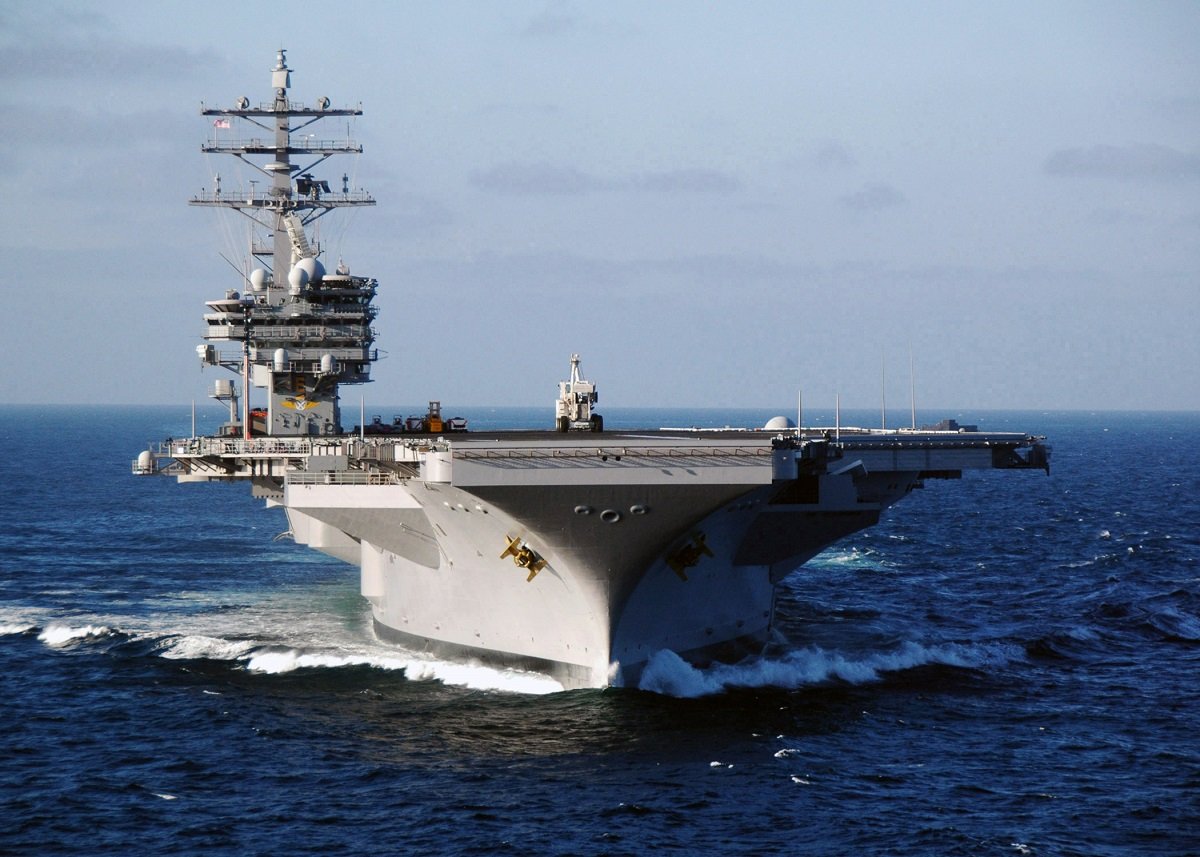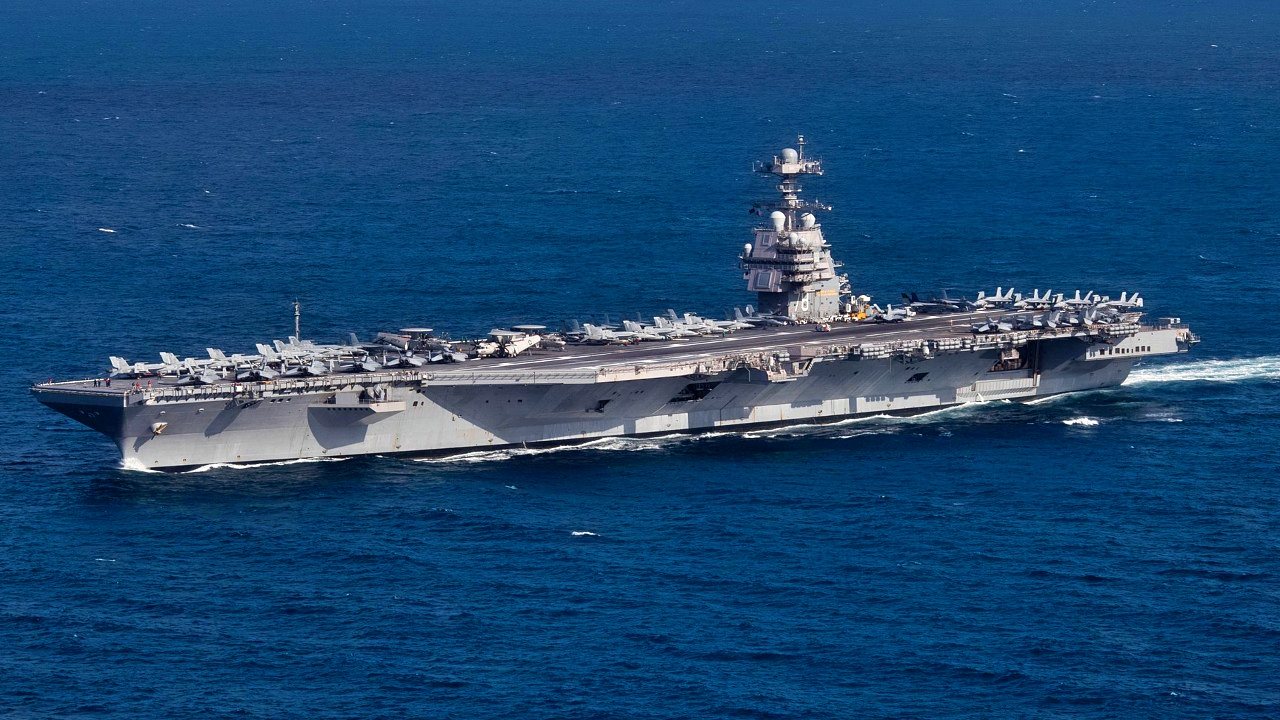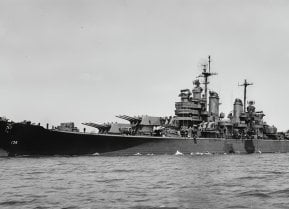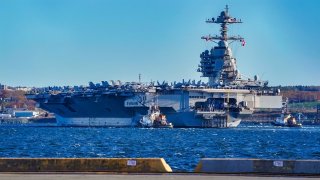The U.S. Navy Is All About Warfighting and Combat Readiness
It’s all “warfighting,” all the time, for the next four years while Admiral Lisa Franchetti, the newly installed chief of naval operations (CNO) or top-ranked U.S. naval officer, presides over the U.S. Navy. It seems Admiral Franchetti is a one-note instrument. Combat readiness is the note—and it’s the right note.
It’s all “warfighting,” all the time, for the next four years while Admiral Lisa Franchetti, the newly installed chief of naval operations (CNO) or top-ranked U.S. naval officer, presides over the U.S. Navy. It seems Admiral Franchetti is a one-note instrument. Combat readiness is the note—and it’s the right note.
Last week Franchetti revealed her priorities for the navy while addressing the annual Surface Navy Association (SNA) National Symposium in Crystal City. Accompanying her remarks was a one-page précis titled “America’s Warfighting Navy.” In it, Franchetti pledges to “deliver decisive combat power,” focusing on physical capability; to “strengthen the navy team,” enriching the human element of maritime might through “world-class training and education” (warming the heart of this former trainer and current educator); and to “earn and reinforce the trust of the American people” in the institution’s ability to “field and maintain the world’s most powerful navy and the infrastructure that maintains it.”
Now, the days are gone when the chief of naval operations actually oversees naval operations, in the manner of Admiral Ernie King during World War II. King bestrode the service in all its dimensions. Nowadays a CNO’s job is to “man, train, and equip” the fleet, supplying battleworthy naval forces to regional combatant commanders. The CNO is a force provider, while regional commanders are the true executors of U.S. military strategy. Still, service chiefs are tone-setters, shaping the culture alongside their responsibility for matériel and human excellence. Battle-mindedness should be the default habit of mind, heart, and deed in the naval service. All else lies downstream from the service ethos. CNO Franchetti gets that.
And the rest? With apologies to Clint Eastwood, there’s little to condemn as ugly in Franchetti’s vision for the service. Goodness abounds here, while there are some bad aspects—or at least aspects open to question—to her vision.
First the good. Franchetti acknowledges that America’s post-Cold War holiday from history has ended. U.S. naval forces can no longer indulge the comforting assumption that they will operate, in the CNO’s words, “from a maritime sanctuary against competitors who cannot threaten us.” The tactical, operational, and strategic setting has turned hostile. She warns mariners, sotto voce, never again to delude themselves into believing that triumph in one conflict obviates their prime function—fighting peer foes for command of the sea—for all time.
The victors might enjoy a respite following a major victory. Naval and military history never ends.
That basic insight was lost on naval officialdom three decades ago. The nature of the Western victory in the Cold War—complete victory without fighting—gave rise to the fancy that naval history had ended. In the wake of the Soviet collapse the U.S. Navy and Marine Corps leadership announced that Western navies now ruled the sea as a virtual birthright. The Soviet Navy lay rusting at its moorings; no new challenger was on the horizon. As a consequence, quoth the preamble to “. . .From the Sea,” sea-service leaders’ first effort at making strategy for the post-Cold War age: “With the demise of the Soviet Union, the free nations of the world claim preeminent control of the seas. . . .” Thus, they ordained, “our national maritime policies can afford to de‐emphasize efforts in some naval warfare areas.” Naval-warfare areas such as anti-ship, anti-air, and anti-submarine warfare.
In other words, skills and hardware necessary to fight other navies went on the backburner, apparently forever judging from the words of “. . .From the Sea.” When you own the sea, why go to the bother and expense of preparing to fight to control it?
In short, the triumphal afterglow of the Cold War masked the hard reality that naval warfare may go through the occasional lull, but it always comes back. The U.S. Navy did not vanquish the Soviet Navy through battle, proving its mettle in the arena. It won by default when the Soviet Union abandoned the field without a fight. In that sense Western maritime supremacy was an illusion. Or at least it was untried.
But even if Western armadas had fought to a smashing triumph, that’s no reason to think that victory in one encounter puts an end to human competition and strife at sea. World politics being what it is, the next challenger will come along sooner or later. Intervals of peace evanesce. And the newcomer could well be more formidable than the last. In fact, it will be if it studies past conflagrations, discerning what went right for the victors and what went wrong for the defeated. Learning from history is precisely what China’s navy has done over the past quarter-century since commencing its ascent to nautical eminence. America’s present quandary vis-à-vis China was foreseeable—and avoidable.
With all this in mind, the wise contender keeps its game face on even in victory. That’s the prime lesson from “America’s Warfighting Navy” and Admiral Franchetti’s remarks to the SNA symposium. Words to the wise.
On to the bad, or dubious. First, at SNA the CNO seemed to downplay the U.S. Navy’s ship count, which has stagnated at just under 300 ships of war for years despite congressional and presidential mandates to boost fleet numbers to 355 hulls or more. Instead she vowed to put together a “warfighting ecosystem” that delivers superior combat power at the time and place of battle, helping the U.S. sea services overpower their antagonists. And indeed, staging more force than the opponent at the scene and time of action is the goal of operational art. It’s how to win.

But that dictum says nothing about where a unit of combat power comes from. At sea it could come from a surface warship, a submarine, or carrier aviation; it could also come from ground-based aviation or missile forces, or from “non-kinetic” modes of warmaking such as electronic warfare or cyberattacks. Merging sea and land power to mold events at sea constitutes the genius behind China’s anti-access and area-denial strategy and forces. So the tally of hulls is not all-important, as Franchetti contends.
But there’s a danger here. Numbers may not be all-important in modern sea fights, but mass remains as crucial as ever. And in large part mass is a function of numbers, whether it’s the number of ships, warplanes, or munitions a force can bring to bear at the place of action. Military sage Carl von Clausewitz opines that mass, not novel tactics or gee-whiz weaponry, tends to decide contests between more or less symmetrical forces. For the outnumbered force—which the U.S. joint force will be on day one of a scrap in the Western Pacific—to pooh-pooh mass, and thus numbers of platforms, courts peril. History has been unkind to combatants such as the Imperial Japanese Navy, which invoked such imponderables as Japanese warrior spirit to wave aside a numerical mismatch with the likely enemy: the U.S. Navy.
The story of Japan’s navy is a cautionary tale, not something to emulate.
Clausewitz would caution against citing the quality of American personnel or weapon systems, or niche advantages such as undersea warfare, as fudge factors to argue that the U.S. sea services can outmuscle a peer enemy despite numerical inferiority. U.S. naval magnates must take care before softpedaling the size of the inventory, not least when they go before Congress to plead for more shipbuilding dollars. Lawmakers could balk at loosening the purse strings if naval leaders testify that numbers no longer matter. Let’s not make an unforced error in the contest for resources, or delude ourselves about our prospects for victory at sea.
Second, semantics are another gripe. For one, the Pentagon, including the sea services, should summarily jettison the term “warfighting.” It’s too narrow-gauge to fit the circumstances confronting the navy and fellow joint forces. There’s more to geopolitical competition than war. In fact, the “pacing threat,” China, prefers to win without fighting, sparing itself the costs and hazards of armed conflict. It wages “war without gunsmoke” in the South China Sea, Taiwan Strait, and East China Sea on a 24/7/365 basis. It does so without letting fly with missiles or gunfire. And it might succeed. Or look at the Red Sea, another operation short of war in which missiles and bombs actually are flying. It’s possible to win—or lose—without war.
It behooves U.S. military folk, including those who ply the raging sea, to inculcate a fighting ethos throughout the spectrum of warlike interactions short of war. Fighting sailors and ships bring a bloody-minded outlook to all such murky interactions, not just open war. Let’s drop warfighting—and widen our aperture on martial affairs.

For another, the sea-service leadership should dispense with the phrase “mission command.” It’s not a particularly accurate translation of the German word Auftragstaktik, and it darkens the cloud of jargon that obscures Pentagon communications. All top leaders mean by it is that senior commanders should refrain from micromanaging subordinates who are on the scene and know better than their superiors what to do to accomplish the goals set by higher authority. Liberty of action is the key.


